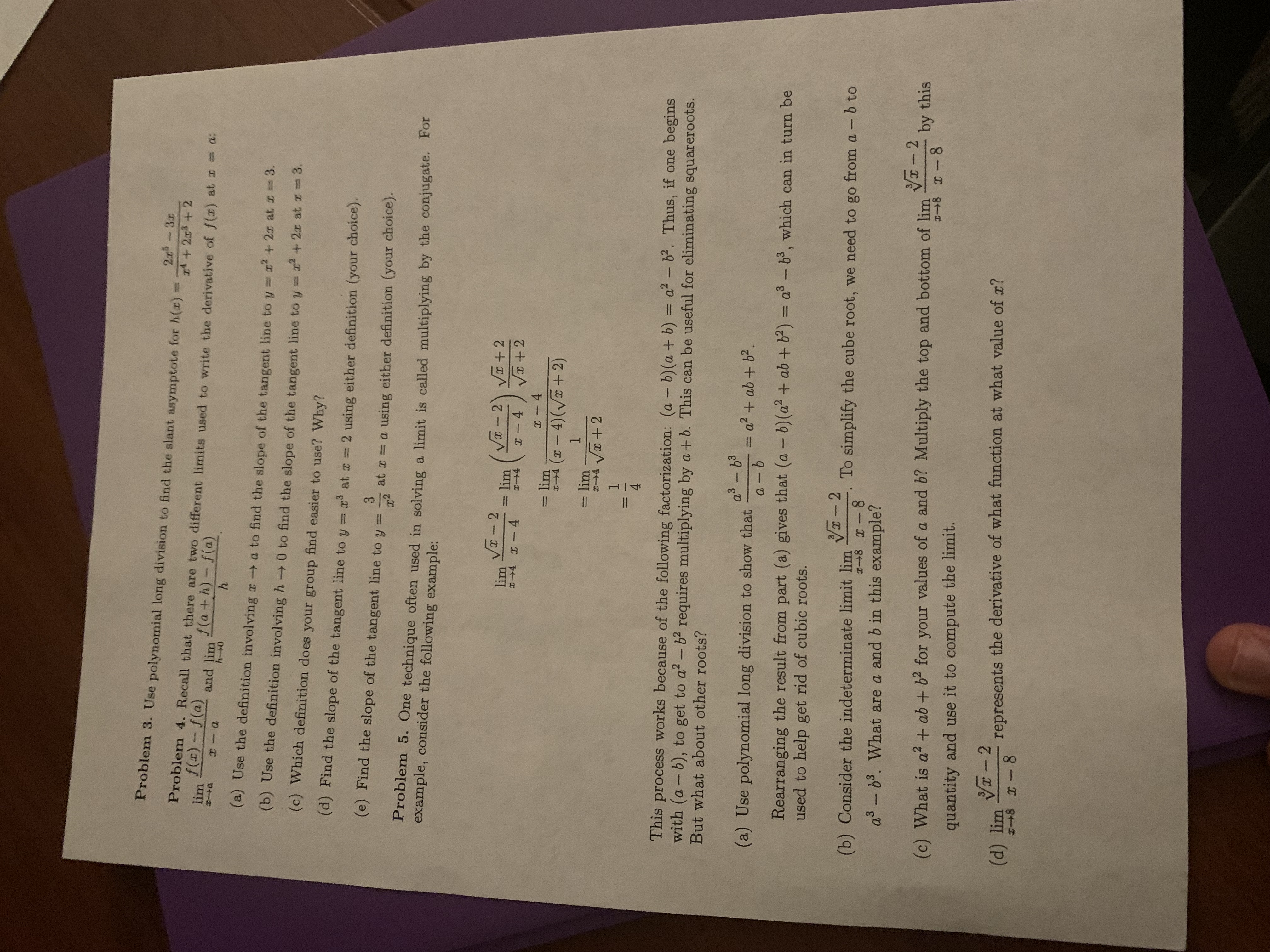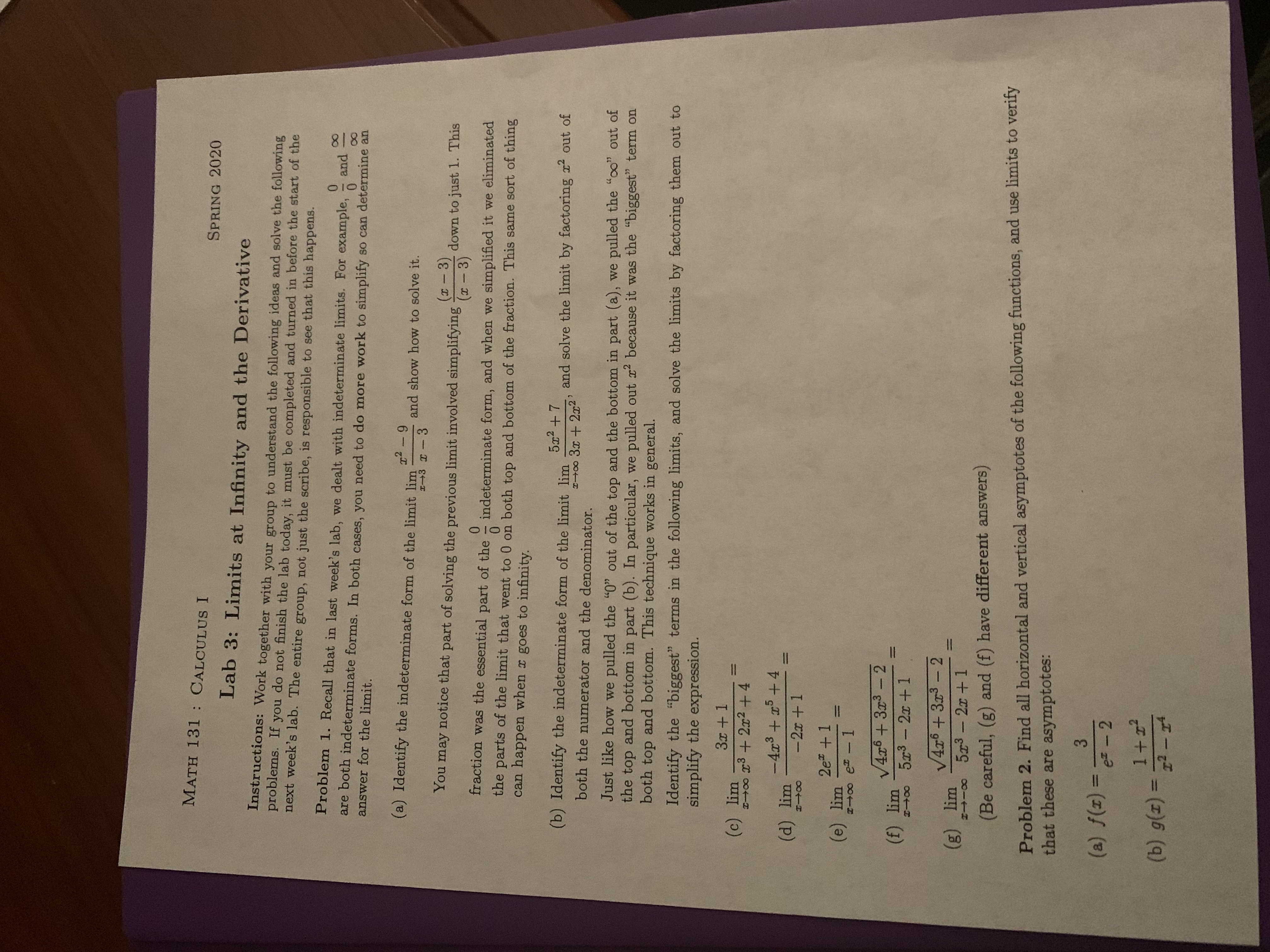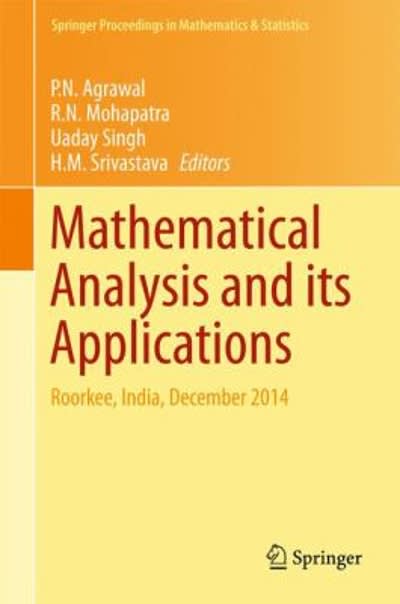

Problem 3. Use polynomial long division to find the slant asymptote for h(x) - 4 4 253 + 2 Problem 4. Recall that there are two different limits used to write the derivative of f(x) at a = a: * + a lim 1(2) -J and lim f(ath) - f(a) I - a (a) Use the definition involving x -+ a to find the slope of the tangent line to y = x? + 2x at x = 3. (b) Use the definition involving h - 0 to find the slope of the tangent line to y = 12 + 2x at r = 3. (c) Which definition does your group find easier to use? Why? (d) Find the slope of the tangent line to y = x3 at r = 2 using either definition (your choice). (e) Find the slope of the tangent line to y = -2 at r = a using either definition (your choice). 3 Problem 5. One technique often used in solving a limit is called multiplying by the conjugate. For example, consider the following example: lim Vx - 2 2 +4 1- 4 = lim Vx - 2 VI + 2 1 - 4 VI+ 2 2 - 4 = lim 1 +4 (1 - 4) (Vx+ 2) = lim - 2-4 Vx + 2 This process works because of the following factorization: (a - b)(a + b) = a2 - b2. Thus, if one begins with (a - b), to get to a2 - b2 requires multiplying by a + b. This can be useful for eliminating squareroots But what about other roots? (a) Use polynomial long division to show that as - 63 a - b - = a2 + ab + 62 . Rearranging the result from part (a) gives that (a - b)(a2 + ab + 62) = a3 - 63, which can in turn be used to help get rid of cubic roots. (b) Consider the indeterminate limit lim - Vx - 2 1-48 x - 8 To simplify the cube root, we need to go from a - b to 3 - 63. What are a and b in this example? (c) What is a2 + ab + 62 for your values of a and b? Multiply the top and bottom of lim V -2 by this 1-+8 1 - 8 quantity and use it to compute the limit. (d) lim - VI - 2 represents the derivative of what function at what value of ? 1-48 1- 8MATH 131 : CALCULUS I SPRING 2020 Lab 3: Limits at Infinity and the Derivative Instructions: Work together with your group to understand the following ideas and solve the following problems. If you do not finish the lab today, it must be completed and turned in before the start of the next week's lab. The entire group, not just the scribe, is responsible to see that this happens. Problem 1. Recall that in last week's lab, we dealt with indeterminate limits. For example, - and - are both indeterminate forms. In both cases, you need to do more work to simplify so can determine an answer for the limit. (a) Identify the indeterminate form of the limit lim - 12 - 9 -3 x _ ? and show how to solve it. You may notice that part of solving the previous limit involved simplifying (x - 3) (x - 3) down to just 1. This fraction was the essential part of the - indeterminate form, and when we simplified it we eliminated the parts of the limit that went to 0 on both top and bottom of the fraction. This same sort of thing can happen when x goes to infinity. (b) Identify the indeterminate form of the limit lim 52 2 + 7 7-+0 3 + 2x2, and solve the limit by factoring 12 out of both the numerator and the denominator. Just like how we pulled the "0" out of the top and the bottom in part (a), we pulled the "co" out of the top and bottom in part (b). In particular, we pulled out x2 because it was the "biggest" term on both top and bottom. This technique works in general. Identify the "biggest" terms in the following limits, and solve the limits by factoring them out to simplify the expression. 3x + 1 (c) lim - I-+00 23 + 2x2+ 4 -4x3 + 15 +4 d) lim -2x +1 2ex + 1 (e) lim 1-+00 ex - 1 V426 +313 - 2 (f) lim I -+ 00 5x3 - 2x+1 V416 +323 -2 (g) lim -4-00 523 - 2x+1 (Be careful, (g) and (f) have different answers) Problem 2. Find all horizontal and vertical asymptotes of the following functions, and use limits to verify that these are asymptotes: 3 ( 8) f ( I) = ex - 2 1+12 (b) g(I) = 72 - 24










